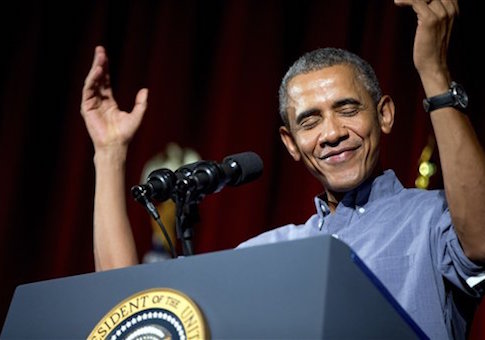Since President Obama has taken office, the length of the executive orders he has issued now exceeds the length of the executive orders issued by former presidents George W. Bush and Bill Clinton, according to a count from the Federal Register.
Additionally, the executive orders that President Obama has issued includes more restrictive language than previous administrations.
In January 2014, President Obama emphasized in a Cabinet meeting that he would not just sit idle and wait for Congress to introduce legislation.
"I’ve got a pen and I’ve got a phone—and I can use that pen to sign executive orders and take executive actions and administrative actions that move the ball forward," Obama said.
In President Obama’s first seven years in office, he issued 229 executive orders, which add up to a total length of 1,086 pages. While Obama has issued fewer executive orders than Bush, who issued 292, and Clinton, who issued 308, the length of their executive orders were less than Obama’s, with Bush’s at 922 pages and Clinton’s at 781 pages.
"Not all executive orders are created equal," states John Hudak of the Brookings Institution. "Some are quite forceful, making dramatic changes to policy. Others are more routine, housekeeping issues."
"To say that one president issued more executive orders than another, tells us little about the scope of those orders or the impact they have on policy," Hudak says.
President Obama is beginning 2016 with more executive action, as he announced on Monday that his upcoming executive order to implement gun control would make it harder for some to purchase firearms, and may even go so far as requiring someone selling a single firearm to obtain a federal license.
According to an analysis conducted by the Mercatus Institute, the language in President Obama’s executive orders is more restrictive than previous administrations.
"We examine the usage of restrictions—words that create binding, legal obligations, such as ‘shall’ and ‘must,’" states the organization. "Although the current administration has issued fewer executive orders than other modern administrations, the figures show that its total usage of restrictions in executive orders and proclamations exceeds that of any of the past six administrations, with the exception of Clinton’s first term."
"We don’t know the actual burden the president’s executive orders impose on the public," said James Broughel, a program manager at the Mercatus Center. "This is because these policies avoid benefit-cost analysis requirements that have been an accepted feature of the regulatory process for over thirty years."
The White House did not respond to requests for comment by press time.
